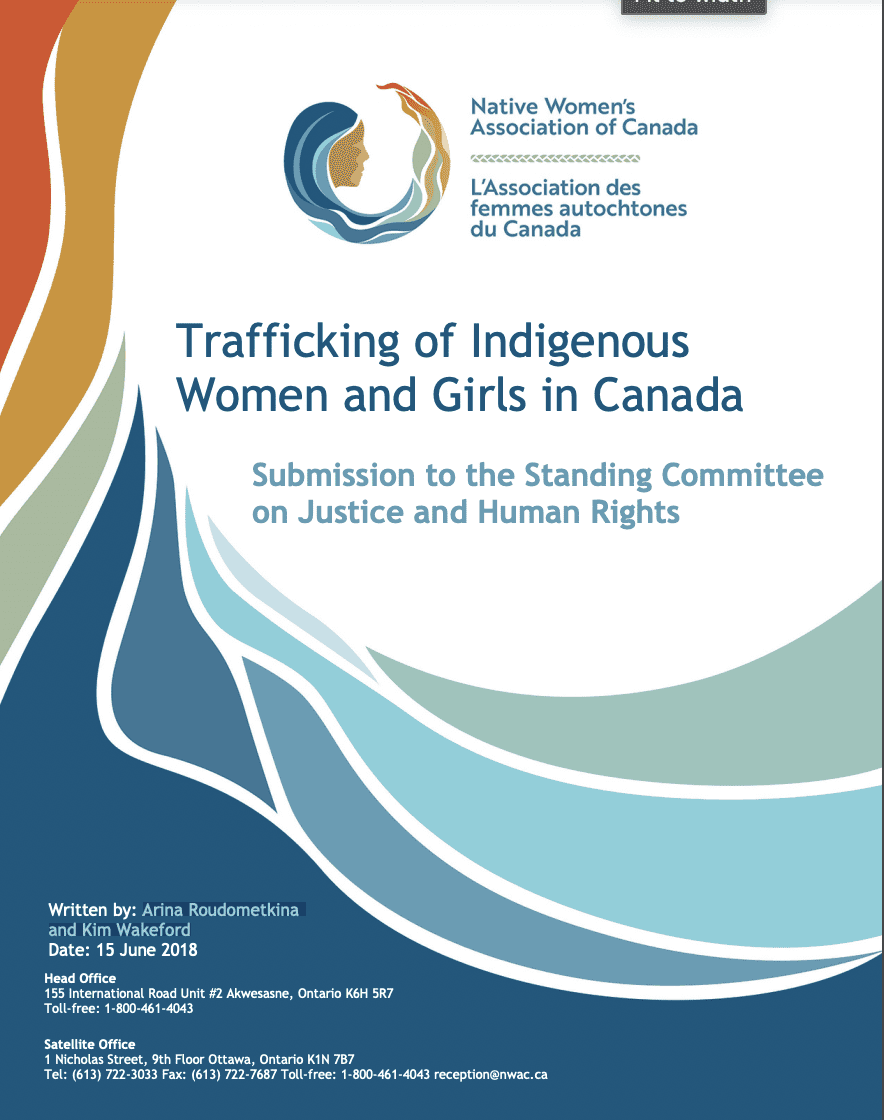
Trafficking of Indigenous Women and Girls in Canada
Introduction
Indigenous women are disproportionately affected by racialized violence in Canada through exposure to both historic and ongoing gendered discrimination. Canada’s colonial legacy has forced Indigenous women and girls into dangerous and precarious social and economic conditions, which in turn has made them more vulnerable to different kinds of violence. This includes situations of exploitation and human trafficking, a prevailing concern that has yet to be properly addressed and recognized.
The definition of human trafficking in both domestic and international policy largely refers to the act of the trafficking of persons as an international phenomenon involving the crossing of borders. In Canada, however, human trafficking is largely a domestic issue. As of 2016, the RCMP identified 330 cases of human trafficking, 94% of which were domestic cases. Of the domestic cases in Canada, Indigenous women are especially overrepresented. A 2016 Public Safety report released statistics that indicate that, while Indigenous women only make up 4% of the Canadian population, they roughly make up 50% of trafficking victims. Women under the age of 18 make up approximately a quarter of the victims of human trafficking.
Colonization and Indigenous Women’s Bodies
Discussing exploitation and trafficking in relation to Indigenous women necessarily means understanding the historical and ongoing colonial sexualization of Indigenous women’s bodies. Since early colonization, Indigenous women have been positioned by Western ideology as inherently violable and less valuable than non-Indigenous, non-racialized bodies. During early colonial contact, this directly disrupted the gendered social configurations of communities, as women’s authority was dismissed in early economic and political interactions between colonizers and Indigenous peoples. The cultural understanding of Indigenous women as sexual, unworthy, and therefore violable was subsequently enshrined into law.
The complexities of how patriarchy, racial violence, and the colonial compulsion to assert white supremacy compound to produce violence against Indigenous women has been well-documented in a range of texts. As Indigenous women have been stating for decades, and which the Inquiry on Missing and Murdered Indigenous Women and Girls has recently indicated, the cultural understanding of Indigenous women as inherently sexual, and therefore violable, has tangible, real-life implications for Indigenous women’s lived experiences of violence.
The violence experienced by women who are sex workers, sexually exploited, and/or trafficked is not separate from colonial violence, but a central part of it.
Read more here.
